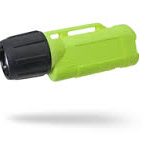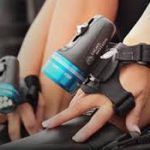 Dive lights not only enhance your daytime diving by magnifying the amazing colors the underwater world holds for us to see, but they are absolutely essential when diving in darker conditions such as night, wreck, cave and cavern diving. If you google 'dive lights' you are sure to find an overwhelming number of different dive light options out there to choose from. In Part 1 of this blog series last week, we hopefully helped you narrow down your dive light choices to which type of dive light you should be using for the kind of scuba diving you are doing. Now that you know which type of dive light to purchase, there is still an overwhelming number of lights available within those categories, so let us give you some tips on how to choose the best light from each one.
Dive lights not only enhance your daytime diving by magnifying the amazing colors the underwater world holds for us to see, but they are absolutely essential when diving in darker conditions such as night, wreck, cave and cavern diving. If you google 'dive lights' you are sure to find an overwhelming number of different dive light options out there to choose from. In Part 1 of this blog series last week, we hopefully helped you narrow down your dive light choices to which type of dive light you should be using for the kind of scuba diving you are doing. Now that you know which type of dive light to purchase, there is still an overwhelming number of lights available within those categories, so let us give you some tips on how to choose the best light from each one.
How to choose the best from 5 dive light categories:
 1. Primary Dive Lights
1. Primary Dive Lights
Bigger is not necessarily always better when choosing a good primary dive light. The most important factors to consider are:
- A wide beam - this way your light covers more of the area in front of you, allowing you to have a wider field of vision during your dive.
- Battery type - you can typically choose between a light with rechargeable or disposable batteries. There is an obvious ecological downside to disposable batteries, however, lights with rechargeable batteries are typically more expensive and won't burn as long.
- Bulb type - HID Bulbs will be your most expensive lights but can produce up to five times the luminous power of a halogen bulb. LED lights are becoming the most popular dive light as they are more durable than HID lights but still offer more lumens then the older halogen lights and a much longer battery life. The cheapest dive lights will be the older halogen technology, which will offer a traditional more yellow hued light beam and an average battery life.
 2. Secondary Dive Lights
2. Secondary Dive Lights
Choosing your secondary, or backup, dive light is somewhat similar to choosing your primary dive light. You can find secondary lights with all of the same bulb choices as primary lights. Most importantly, however, you should be looking for a light that has all of the following features:
- Small enough to easily fit into your BC pocket.
- Uses disposable batteries, giving it a longer shelf life so it will be ready to work when needed.
- A nice bright beam of light since it will be much smaller in size and will most likely be your only source of light if you are using it as a backup.
 3. Wrist and Head Mount Lights
3. Wrist and Head Mount Lights
If you're looking for the convenience of wearing your lights mounted either on your wrist or head, you should be looking for a light that has a high-performance level. This is important as the size of the light will be small and you will want the beam of the light to be as impactful as possible. Typically you do not want to be looking for the cheapest possible light in this circumstance.
 4. Canister Lights
4. Canister Lights
If you're looking to purchase a canister light you're probably doing more technical dives and may know quite a bit about lights already. When diving in more narrow passageways or waters where there can be a lot of silt, we recommend looking for a canister light that has a narrower beam, therefore, giving you a more focused light. Also, since those who use canister lights are generally doing more aggressive diving, look for a canister body made of the most durable materials.
 5. Videography Lights
5. Videography Lights
As an underwater videographer, you want to find a light that has a consistently bright beam, not one with a 'hotspot' in the center. Having a light with multiple power settings is also advantageous as it will allow you to fine tune the exposure of your shot. Although these lights may be more pricey, some may allow you to also focus the beam, then enabling it to be used as a primary light for wreck or cave diving.
When it comes to the world of dive lights, just one look at all of your options can easily be overwhelming. We hope by following this two-part post on choosing and buying the best underwater lights, you'll be able to make the best choice for you. Here at Underseas Scuba Center, we carry a large stock of many of these types of lights. Really, nothing beats actually holding and test these lights out in person, so we encourage you all to come on into the store and try them for yourselves!


